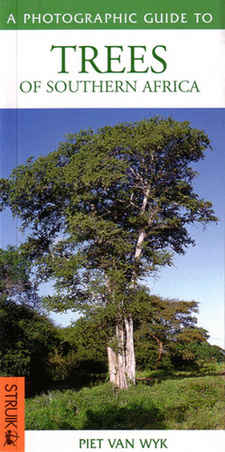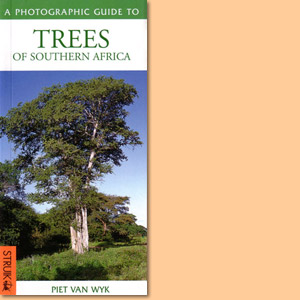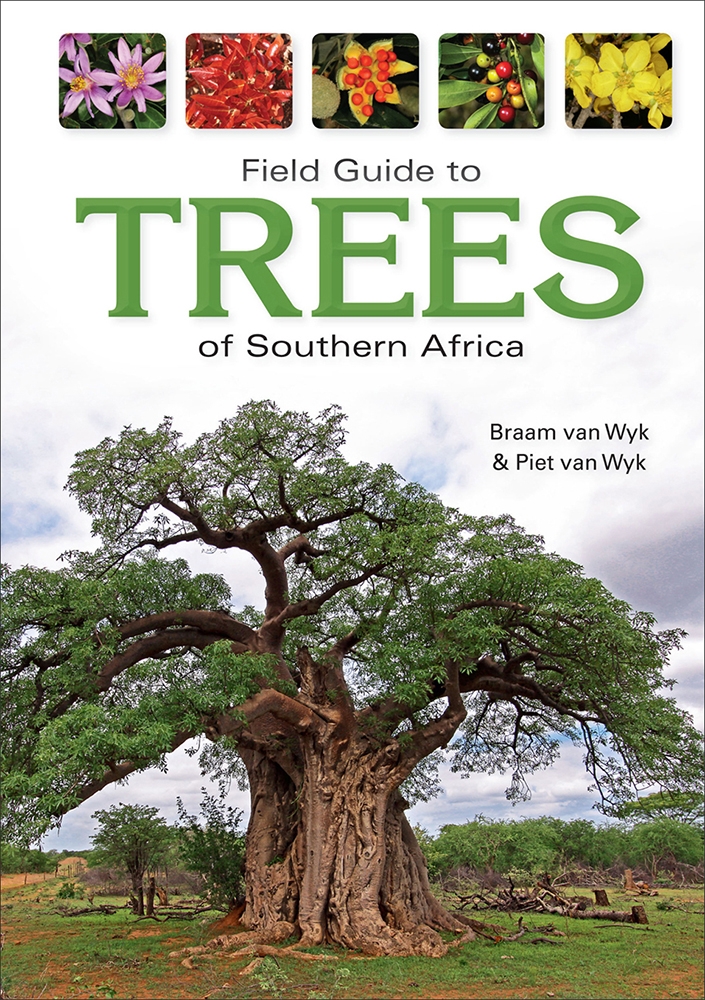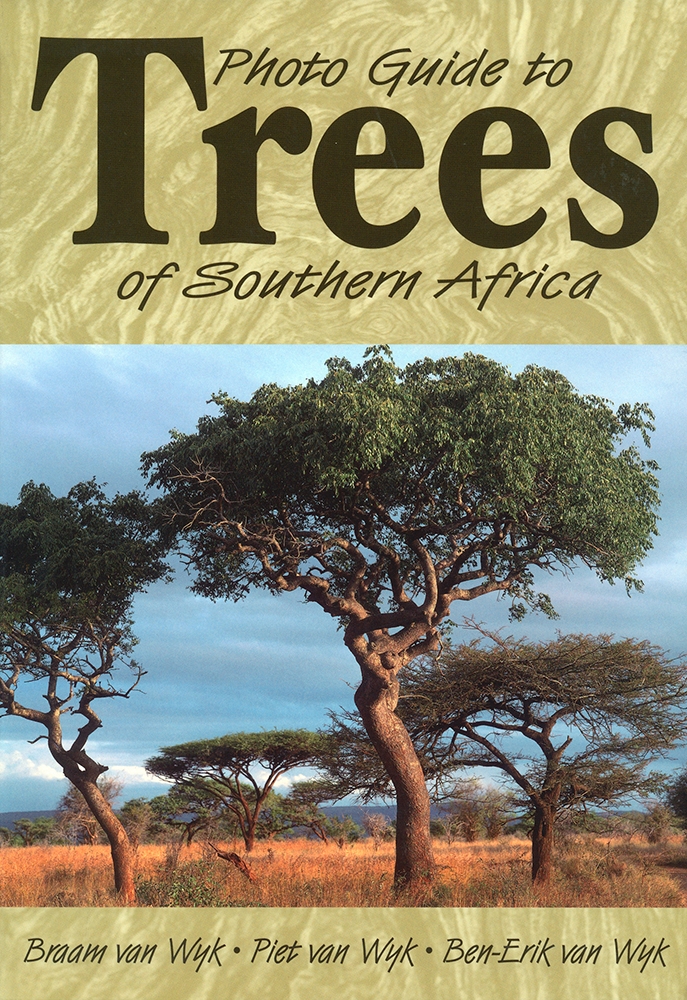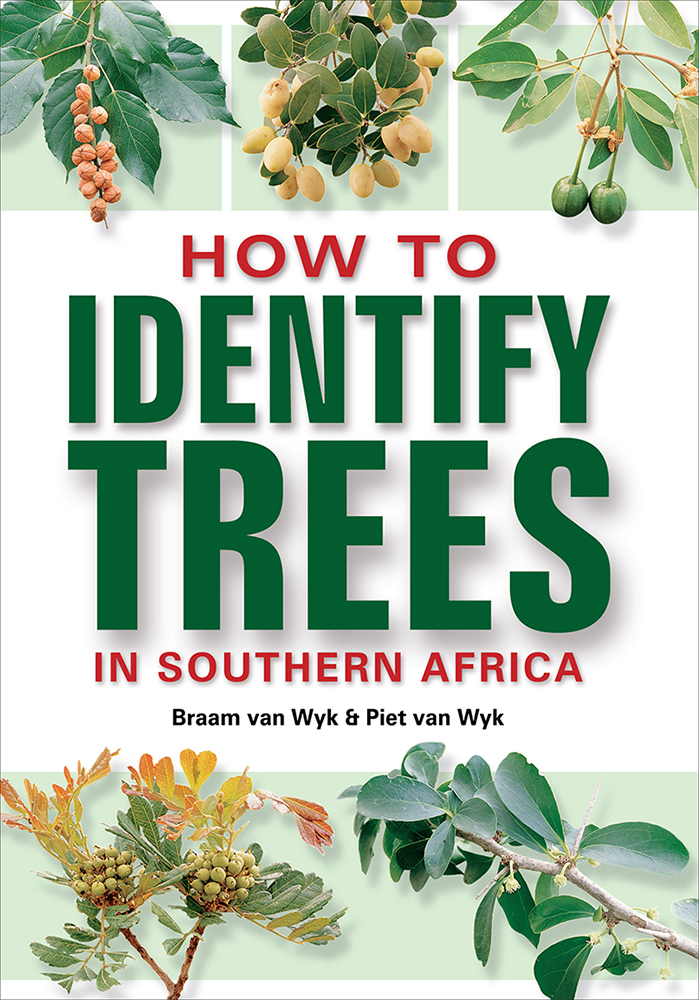A Photographic Guide to Trees of Southern Africa, by Piet van Wyk
In this photographic guide to trees of Southern Africa, Dr Piet van Wyk, former Head of Research and Communication of the South African Parks Board, presents approximately 250 of Southern Africa's most commonly seen trees in a clear and succinct but easily accessible way.
Introduction:
A major factor that has influenced the growing interest in trees is the number of 'green' awareness campaigns that are being conducted around the world. As little as ten years ago, scientists who sounded warnings about global warming (the greenhouse effect), ozone depletion, the unacceptable rate at which rain forests are being cleared, acid rain, and so on, were either ignored or passed off as alarmists. Today the seriousness of pollution and its destructive effects on our environment are widely acknowledged, prompting people to engage in positive action to avert an impending catastrophe. One of the first steps we can take in this regard is to familiarize ourselves with an area of concern and then become thoroughly acquainted with the remedy and the ways in which it should be administered. The purpose of this photographic guide is to 'whet the appetite' of the uninitiated and to hopefully encourage a desire among readers to become more knowledgeable about trees in general - and those of southern Africa in particular - and their critical role in the environment.
Example: Aloe dichotoma (SA 29) Quiver tree
Members of the Aloe genus are found mainly in Africa. All of them have characteristic succulent leaves and although quite a number have been incorporated in the national tree lists, only a few are truly tree-like, with a main trunk, conspicuous branches and a crown. On the eastern side of the subcontinent, A. bainesii is the outstanding example in this category while an the arid, western side it is the quiver tree. The quiver tree has a relatively restricted distribution in the northern Cape and adjoining Namibia to a point north of Windhoek. It is protected in several national parks in both countries. The common name, quiver tree, derives from the fact that Bushmen hunters fashioned quivers for their arrows from the sott branches. According to Palgrave (1983), Simon van der Stel was the first to record this species, in 1685.
In full-grown trees the trunk is massive, measuring about 3 in in circumference at ground lerel but tapering rapidly further up. It branches profusely and although the leaves are fairly small, situated only at the tips of the branches, the crown is relatively dense. The dark yellow bark flakes off in patches, causing the trunk to appear mottled. The branches are grey und smooth. The pale yellow flowers are borne an short spikes in branched axillary inflorescences (June/July). Insects, birds and primates are attracted to the nectar. The fruit resembles that of other Aloe species, being roughly oval with six distinct, longitudinal grooves. The wood is fibrous and useless.
This is an excerpt from the book: A Photographic Guide to Trees of Southern Africa, by Piet van Wyk.
Title: A Photographic Guide to Trees of Southern Africa
Author: Piet van Wyk
Publisher: Random House Struik
Imprint: Nature
2nd edition. Cape Town, South Africa 2001
ISBN 9781868726202 / ISBN 978-1-86872-620-2
Softcover, 9x19 cm, 144 pages, throughout colour photos
van Wyk, Piet im Namibiana-Buchangebot
A Photographic Guide to Trees of Southern Africa
A Photographic Guide to Trees of Southern Africa presents approximately 250 of southern Africa's most commonly seen trees.
Pocket Guide: Trees of Southern Africa
The Pocket Guide Trees of Southern Africa introduces to the region’s trees, describing and illustrating 132 species.
Field Guide to Trees of Southern Africa
Field Guide to Trees of Southern Africa describes and illustrates more than 1000 species, focusing on the most common and those most likely to be encountered.
Photo Guide to Trees of Southern Africa
Photo Guide to Trees of Southern Africa is an invaluable identification and reference guide to 300 of the more common tree species.
How to Identify Trees in Southern Africa
How to Identify Trees in Southern Africa provides the background knowledge essential for tree identification.

